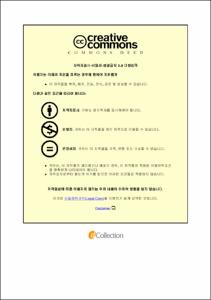Ulsan Univ. Repository
Thesis
General Graduate School
Computer Engineering & Information Technology
2. Theses (Ph.D)
Human Mobility Prediction and Application in Mobile Crowd Sensing
- Abstract
- Human mobility prediction plays a pivotal role in a wide range of applications, including targeted advertising, traffic management, urban planning, and the containment of contagious diseases. In the context of Mobile Crowd Sensing (MCS), where mobile users collect sensory data in their daily lives, human mobility prediction offers the potential to enhance the data-collection process by optimizing resource allocation based on future human locations. However, predicting human mobility is a challenging problem, characterized by non-linear, dynamic patterns influenced by various factors such as time, weather, and events. Therefore, the main goal of this dissertation is to address two primary challenges: the development of accurate and efficient human mobility prediction models, and the effective application of human mobility prediction to enhance MCS systems. To achieve these goals, we propose two distinct frameworks. In the first framework, we focus on location prediction within the realm of human mobility. Prior research primarily concentrated on modeling individual mobility patterns in isolation, often neglecting valuable insights that can be gained from the movements of companions. To bridge this gap, our research introduces a two-phase framework that capitalizes on spatio-temporal contexts embedded in both the person of interest (POI) and their companions’ mobility patterns. Initially, the framework identifies companions using spatial closeness (SC) and person ID embedding (PIE) vectors. Additionally, it effectively addresses the challenge of dimensionality through the application of a stacked autoencoder, where the encoder part plays a pivotal role in solving the problem. In the second phase, a bidirectional recurrent neural network (BRNN)-based multi-output model is employed to precisely forecast the POI’s future locations across various time slots. This process is optimized using a weighted loss approach that takes into account the significance of each future time slot for accurate location predictions. In the second framework, our focus shifts to the selection of opportunistic workers (OWs) in the context of Mobile Crowd Sensing (MCS). We propose a novel framework known as ’Context-Aware Worker Recruitment based on a Mobility Prediction Model’ (CAMP) to efficiently choose the most suitable workers who can complete a maximum number of sensing tasks within a given budget constraint. CAMP operates in two phases. Initially, it predicts the future locations of workers and subsequently selects a group of workers to carry out sensing tasks. Diverging from traditional approaches, CAMP enhances worker mobility prediction using a recurrent neural network-based model, substantially improving location prediction accuracy during the first phase. In the second phase, we introduce a weighted-utility algorithm that takes into account variations in task distribution across different locations and sensing cycles. The integration of accurate mobility prediction and the weighted-utility worker selection algorithm positions CAMP as a superior solution for optimizing task allocation within the MCS framework. We conducted comprehensive experiments to assess the performance of the proposed next-location prediction and worker selection frameworks across diverse large datasets. The evaluation results demonstrate that the location prediction frameworks achieve higher predictive accuracy, while the worker selection framework successfully completes more tasks within the same budget constraints compared to their alternatives.
- Issued Date
- 2024
- Awarded Date
- 2024-02
- Type
- Dissertation
- Alternative Author(s)
- NGO TAN QUAN
- Affiliation
- 울산대학교
- Department
- 일반대학원 전기전자컴퓨터공학과
- Advisor
- Seokhoon Yoon
- Degree
- Doctor
- Publisher
- 울산대학교 일반대학원 전기전자컴퓨터공학과
- Language
- eng
- Rights
- 울산대학교 논문은 저작권에 의해 보호받습니다.
- Appears in Collections:
- Computer Engineering & Information Technology > 2. Theses (Ph.D)
- 파일 목록
-
-
Download
 200000728540.pdf
기타 데이터 / 4.7 MB / Adobe PDF
200000728540.pdf
기타 데이터 / 4.7 MB / Adobe PDF
-
Items in Repository are protected by copyright, with all rights reserved, unless otherwise indicated.